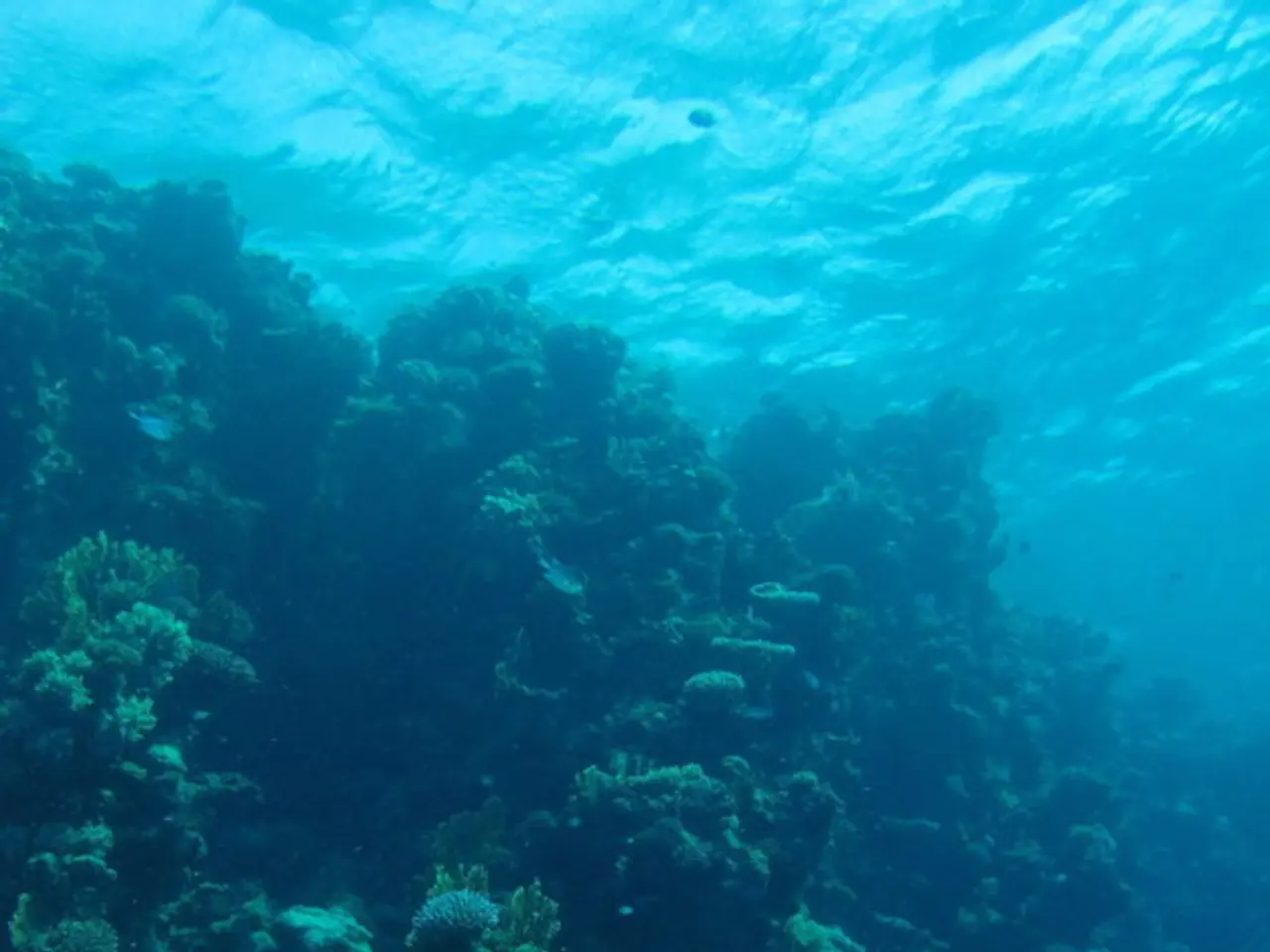Gargantuan Hydrothermal Structure Unveiled Deep within the Pacific Ocean Depths
The recent discovery of the Kunlun hydrothermal field, located on the Caroline Plate, far from mid-ocean ridges, challenges traditional views on hydrogen generation and serpentinization. This system, composed of 20 large seafloor depressions, provides a new tectonic and geochemical setting for serpentinization-driven hydrogen generation, expanding the known geological contexts for hydrogen production.
The Kunlun hydrothermal field spans about 11.1 square kilometers and emits an extraordinarily high hydrogen flux estimated at approximately (4.8 \times 10^{11}) moles per year. This output corresponds to about 5% of the global abiotic submarine hydrogen emission, making it an unprecedented find for a single site.
The unique geological features of the Kunlun hydrothermal field, including steep-walled craters resembling kimberlite pipes, explosive breccia deposits, and layered carbonate structures, suggest a complex, staged hydrothermal evolution involving gas-driven eruptions, hydrothermal circulation, and mineral deposition. This dynamic process contrasts with the more steady-state serpentinization observed at mid-ocean ridges.
The findings from the Kunlun hydrothermal system have significant implications for future research into renewable energy sources, as the discovery reveals previously unrecognized deep-sea ecosystems potentially dependent on hydrogen-fueled chemosynthesis. It also expands prospects for natural clean energy sources and informs models about abiotic hydrogen production relevant to planetary science and origin-of-life studies.
Moreover, the discovery of the Kunlun hydrothermal system offers a natural laboratory to study life forms that thrive in extreme environments, providing clues to how early Earth's ecosystems may have functioned when life was still in its nascent stages. During the exploration of the Kunlun hydrothermal system, a variety of deep-sea life forms were observed, including shrimp, squat lobsters, anemones, and tubeworms.
Understanding the conditions under which hydrogen is produced in such environments could inform new technologies for extracting and utilizing this energy in sustainable ways. The Kunlun system stands out for its exceptionally high hydrogen flux, scale, and unique geological setting, making it a valuable resource for further study.
If similar hydrogen-rich submarine systems can be located and studied in greater detail, they may hold the key to tapping into vast, untapped hydrogen resources beneath the ocean floor. The Kunlun hydrothermal field's hydrogen emissions could have significant implications for both ecological studies and the search for sustainable energy resources.
The findings of the Kunlun hydrothermal field, with its high hydrogen flux and unique geological features, could revolutionize the field of environmental science, particularly in relation to climate-change mitigation, as it presents a potentially vast, untapped resource for sustainable energy. This discovery underscores the role of technology and data-and-cloud-computing in uncovering such resources, expanding our understanding of the environment and pushing the boundaries of renewable energy solutions.




